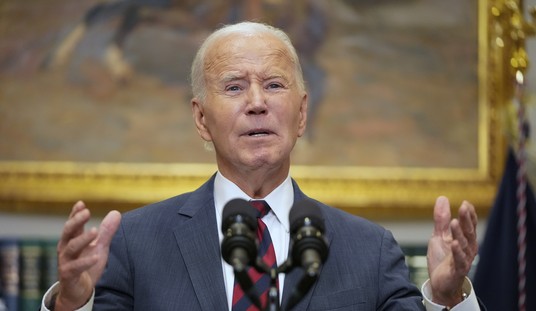Last week, Russia's lower house of parliament passed a resolution insisting that Josef Stalin's man-made 1932-33 famine - called the Holodomor in Ukrainian - wasn't genocide.
Not even the Russians dispute that the Soviet government deliberately starved millions. But the Russian resolution indignantly states: "There is no historical proof that the famine was organized along ethnic lines." It notes that victims included "different peoples and nationalities living largely in agricultural areas of the country."
Translation: We didn't kill millions of farmers because they were Ukrainians; we killed millions of Ukrainians because they were farmers.
And that's all it takes to be acquitted of genocide.
The United Nations defines genocide as the "intent to destroy, in whole or in part, a national, ethnical, racial or religious group." Left out of this definition are "modern" political labels for people: the poor, religious people, the middle class, etc.
The oversight was deliberate. The word "genocide" was coined by a Polish Jew, Raphael Lemkin, who was responding to Winston Churchill's 1941 lament that "we are in the presence of a crime without a name." Lemkin, a champion of human rights who lost 49 relatives in the Holocaust, gave it a name a few years later. But to get the U.N. to recognize genocide as a specific crime, he made compromises.
Pressured by the Soviets, Lemkin supported excluding efforts to murder "political" groups from the U.N.'s 1948 resolution on genocide. Under the more narrow official definition, it's genocide to try to wipe out Roma (formerly known as Gypsies), but it's not necessarily genocide to liquidate, say, people without permanent addresses. You can't slaughter "Catholics," but you can wipe out "religious people" and dodge the genocide charge.
Recommended
Political scientist Gerard Alexander decries that type of absurdity as "Enlightenment bias." Reviewing Samantha Power's moving 2003 book, "A Problem from Hell: America and the Age of Genocide," Alexander observed that this bias leaves the greatest mass murderers of the 20th century - self-described Marxist-Leninists - somewhat off the hook.
In Power's book, the most influential writing on genocide in a generation, she scolds - often justly - the U.S. for not doing more to stop systematized slaughter. But by focusing so narrowly on the U.N.-style definition of genocide, she implicitly upholds a moral hierarchy of evil, which in effect renders mass murder a second-tier crime if it's done in the name of social progress, modernization or other Enlightenment ideals.
This is dangerous thinking; people perceived to be blocking progress - farmers, aristocrats, reactionaries - can be more forgivably slaughtered than ethnic groups because they're allegedly part of the problem, not the solution. After all, you've got to break some eggs to make an omelet.
For many, the Soviets and the Red Chinese elude the genocide charge because Communists were omelet-makers. Ukrainian kulaks, or independent farmers, opposed Stalin's plan for collectivization, so they were murdered for that "greater good."
Today, Mao and Stalin aren't in Hitler's class of evil because Hitler wasn't a "modernizer," he was a racist. Note how the Russians have no problem copping to the charge of mass murder but recoil at suggestions it was racially motivated.
It's a wrongheaded distinction. Murder is murder, whether the motive is bigotry or the pursuit of allegedly enlightened social planning.
It's also a false distinction. Racial genocide is often rationalized as a form of progress by those responsible. Under the Holodomor, Ukrainian culture was systematically erased by the Russian Soviets, who saw it as expendable. No doubt the Sudanese janjaweed in Darfur and the Chinese People's Liberation Army in Tibet believe they are "modernizers," too.
Or consider the ultimate racially motivated genocide, the Holocaust. Gotz Aly and Susanne Heim demonstrate in their brilliant book, "Architects of Annihilation: Auschwitz and the Logic of Destruction," that the Final Solution, particularly in Lemkin's own Poland, was perceived by the young economists overseeing it as a "modernizing project that would transform society."
In Germany, the effort to crush Jewry was intertwined with the effort to nationalize the economy and eliminate small and independent businesses. For German social engineers, the Jews were convenient guinea pigs for their economic experiments. The first test cases were not the Jews but the mentally ill, who were classified as an economic liability - "useless bread-gobblers" - in Germany's 1936 Four-Year Plan of economic modernization.
The climate of anti-Semitism made the Holocaust possible, but so did Enlightenment bias, which holds that almost anything can be justified in the name of progress.
I doubt such distinctions would have been of much comfort to Lemkin's 49 relatives.

























Join the conversation as a VIP Member